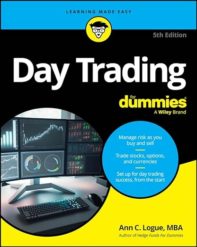Annie here: Today, I have a guest post on covered calls. As always, no trading or investment strategy is right for everyone, and past performance does not indicate future results. With that in mind, if you want to learn more about covered calls, Mike has some ideas for you.
Covered Calls: Earn 1.5% Per Month And Have Downside Protection
by Mike Scanlin
Website: http://www.borntosell.com
Covered calls are a popular and well-practiced investment strategy used by income investors. In-the-money buy-writes can be used to generate 1.5% per month or more. Although fairly consistent in their ability to generate income, some covered call investors suffer losses during bear markets. Often missing from their portfolios are discipline, diversification, and patience. Let’s examine those and then consider a portfolio for the November option cycle.
1. Discipline
Covered calls are not a get-rich-quick strategy. It’s more like collecting interest than anything else. But the compounding effect of regular monthly gains is powerful over long periods of time. Once an investor decides to implement a covered call strategy it is best to give the strategy a couple of years before rendering judgment on its effectiveness.
In fact, last month Nikunj Kapadia, an Associate Professor of Finance at the University of Massachusetts, published a paper called “15 Years of the Russell 2000 Buy‐Write“. It examined the robotic application of the covered call strategy to the Russell 2000 index, RUT. Professor Kapadia’s results:
“Over the 182 month period of analysis, the RUT buy‐write strategy using 2% out‐of‐the‐money, one‐month calls generated higher returns than the underlying index (8.87% versus 8.11%) at about three‐quarters of the standard deviation (16.57% versus 21.06%).”
2. Diversification
Investors tend to fall in love with a handful of stocks. That’s fine as long as the handful includes companies are not all correlated. Spreading investments across industry sectors, geographic regions, growth rates, commodities, etc, is critical because uncorrelated investments offer some diversification protection in the event that one of them declines during the covered call portfolio’s life.
3. Patience
Collecting time premium is a game of patience. Due to option spreads and transaction costs you should not be making daily adjustments to your covered call positions. In fact, if you are selling in-the-money options you will rarely adjust them at all. Most likely just wait until expiration day and then let them get called away.
So how do we earn 1.5% per month?
Let’s look at the characteristics of the holdings in a portfolio of 5 uncorrelated companies or ETFs. Then we can find examples in each category that generate an annualized return of 18% or more per year (including dividends).
The sectors could be:
1. Industrial Goods or Conglomerate
2. Technology or Services
3. Healthcare or Financial
4. Materials or Consumer Goods
5. International focused
Within each sector the ideal, but not always required, characteristics include:
— dividend yield
— no earnings release before option expiration
— large market cap
For each call option we’ll be writing:
— downside protection of 5% or more
— reasonable open interest
An Example Portfolio For November 19 Expiration
Start with the list of Dividend Champions, which are those companies that have increased dividends for 25 or more years in a row. From that list we find the AFL 35 strike (stock 41.30) and TGT 50 strike (stock 52.95) offer annualized-returns-if-called of 17% and 18%, with a downside protection of around 17% for AFL and 7% for TGT. Both have earnings coming up, so you’d have to be comfortable with that before investing (although these in-the-money options mitigate some of the earnings risk).
To that mix, let’s add some uncorrelated stocks in the technology and financial sectors.
On the technology side, these covered calls all yield over 18% annualized return for the November cycle: SINA 80s (stock 93.40), SWKS 20s (stock 22.46), NVDA 14s (stock 15.70), AKAM 22s (stock 24.50). They also offer downside protection of 11% or more and none of them have earnings before the November expiration. Or, if you just wanted to buy AAPL you could do the Nov 390s (stock 422) for 19% annualized return (but AAPL has an earnings release Oct 18).
Probably want to use an ETF for the financial sector to avoid single company risk. One of the most-popular financial ETFs is XLF (stock 12.60). The Nov 12 buy-write offers a 31% annualized return.
Lastly, let’s add a commodity stock. We’ll use GLD (stock 163.40) but there are many other choices in the materials space. The GLD Nov 159s yield 19%.
Adding it all up, here is a diversified covered call portfolio for the November expiration:
|
Symbol |
Sector |
Price |
Strike |
Downside |
Annual Return |
|
Protection |
If Called |
||||
|
AKAM |
technology |
24.29 |
22 |
11% |
18% |
|
AFL |
insurance |
41.28 |
35 |
17% |
17% |
|
GLD |
materials |
163.85 |
159 |
5% |
19% |
|
TGT |
consumer |
53.03 |
50 |
7% |
18% |
|
XLF |
financial |
12.6 |
12 |
8% |
31% |
If you wanted additional diversification (probably a good idea if your portfolio allows it) you could add consumer goods, industrial goods, healthcare, or an international focused company or ETF.



I love writing calls and puts – this looks like a really great portfolio!